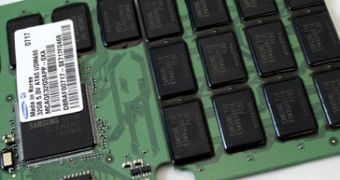Solid-state storage is continuously gaining more and more attention from the mobile enthusiasts. Flash-based storage is thinner, more energy-saving and has better access timings than the conventional hard-disk drives. They are the best pick for notebooks such as the ethereal MacBook Air or Lenovo's Thinkpad X300.
High-capacity solid-state drives are extremely expensive, and it is very likely that you would pay the price of a sports car for an 160 GB solid-state drive. For instance, the flash-storage option in the MacBook Air accounts for the $1,300 price difference as compared to the lower-cost hard-drive model that sells for $1,799. Moreover, solid-state drives have a limited lifespan when compared to the hard-disk drives, and allow for a certain number of write cycles (10,000 for multi-level cell flash or 100,000 for single-level cell).
SanDisk has introduced a low-power, high speed 1.8-inch solid-state drive that can provide a data transfer rate of 66MB/sec, with a random read rate of over 7,000 inputs/outputs per second. This performance easily surpasses the hard-disk drives' capacity multiple times. The company has not disclosed the pricing aspect yet, but it will surely go down until the device reaches the market. For instance, an 8GB SanDisk flash card now sells for about $80 at resellers, but some years ago, for $80 you could only get an 1GB pen-drive at most.
SanDisk will also join Toshiba in manufacturing 43-nanometer flash memory chips, that would allow solid-state drives reach higher capacities, ranging from 120 GB to 160 GB. Both SanDisk and Toshiba recently announced that they have achieved 32-Gigabit (Gb) density chips. According to Khandker N. Quader, SanDisk's senior vice president of flash memory design and product development, the 32 GB die is combined with multi-level cell technology in order to allow more bits to be stored, thus doubling the storage capacity for SSDs.
SanDisk is also working on a new technology, called the "X3", which will allow the company get 3-bit cell memory. "This is an important milestone (and) allows us to do 3bits/cell as opposed to 2bits/cell thereby providing improved manufacturing efficiency," he said. "So a combination of technology scaling (i.e., 56nm to 43nm) and the bit scaling (i.e. 2bits/cell to 3bits/cell) is extremely powerful for manufacturing efficiency and for increasing capacities of flash memories," claimed Quader.

 14 DAY TRIAL //
14 DAY TRIAL //